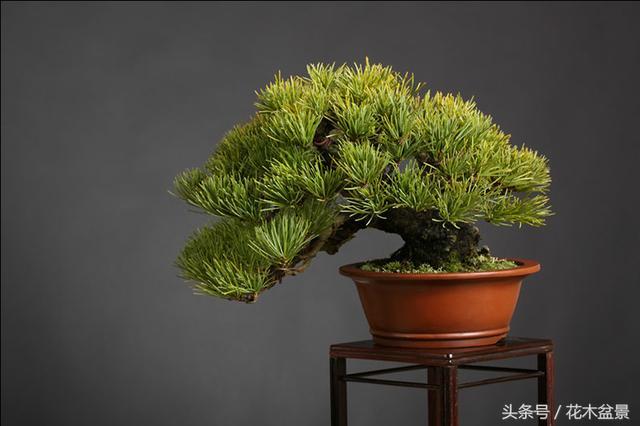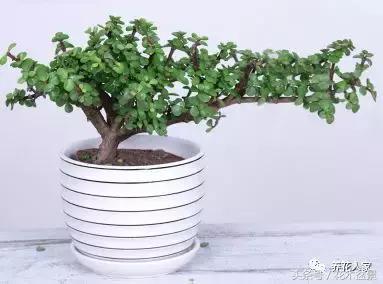Forming bonsai, such as beauty, needs long-term maintenance.

People who like flowers and trees and bonsai are all romantic people.
No matter how good the production of bonsai is, it still can't show the beauty of bonsai. Of course, no matter how good it is, it's just a potted plant. At best, you can enjoy the auspicious feeling of lush and thriving, and you basically have nothing to do with art! Shaped bonsai, such as beauty, need long-term maintenance in order to keep it beautiful for a long time. After the bonsai is formed, it is somewhat considerate, and some of it continues to work hard.
Production focuses on the layout, structure and lines of management, maintenance is the sublimation of temperament after modeling! The first is to supplement and improve the modeling, and the second is to cultivate the ethos and cultural connotation of bonsai. The sense of aging of bonsai, the sense of density of branches and leaves, the sense of transition between branches and branches, and the sense of structural harmony all need to be completed through maintenance.
Conservation should be said to be the second creation and embellishment, not only to have scientific knowledge but also to have cultural and artistic accomplishment. Maintenance is an important link in the process of enjoying bonsai, so don't neglect it.
The purpose of bonsai plant tree management is to maintain and improve the artistic modeling and landscape effect of bonsai plants, prevent diseases and insect pests, and ensure the healthy growth of bonsai plants.
Conservation and modification of general tree bonsai
Once bonsai plants are cultivated and formed, the maintenance work in the future should try to maintain the existing artistic modeling, generally do not make major changes, can only make some small adjustments. In the daily management, mainly through sprouting, thinning, coring and other pruning measures to control branch growth, so that it does not destroy the existing artistic modeling. This is the problem of type preservation of bonsai plants. In some cases, bonsai plants may break or die under the influence of wind damage, diseases and insect pests and other disasters. in this case, type preservation is no longer possible, and new trees should be re-cultivated at this time. This is the problem of modification.
Bonsai plants are constantly growing and changing, so it is impossible to make the tree type absolutely unchanged. Therefore, type preservation can only be relative. The process of type preservation is to constantly adjust the changed branches, so that the tree shape does not change as a whole, but the change in details is inevitable. The continuous adjustment of branches in conservation is not mechanical, but the re-creation process of bonsai art modeling, which is where the continuity of bonsai art creation lies.
The measures of tree bonsai conservation and modification are still inseparable from pruning and binding technology, which involves the content of bonsai art modeling, which needs to be discussed separately and deeply, and will not be discussed here.
Tree management of flower and tree bonsai and fruit tree bonsai-- promoting flower bud differentiation
Bonsai of flowers and trees and fruit trees must have flowers and fruits in order to have the best ornamental effect, and the prerequisite for blooming and fruiting is the formation of flower buds. Therefore, in the maintenance and management of flowers and trees and fruit bonsai, attention should be paid to the preservation or modification. Attention should also be paid to promoting the formation of flower buds.
It is generally believed that the accumulation of carbohydrates and other nutrients in plants is a prerequisite for the formation of flower buds. Therefore, any measures that are conducive to increasing the accumulation of nutrients in plants can promote flower bud differentiation. These measures are as follows:
1. Strengthen the supply of fertilizer and water and promote the robust growth of branches, which can increase the production of photosynthates.
2. Measures such as heart-picking and leaf-picking are adopted to control the growth of strong branches so as to reduce the consumption of nutrients.
3. Bonsai of flowers and trees should remove the fruits that have no ornamental value after falling flowers, so as to save nutrition.
4. Measures such as ring cutting and ring peeling can be used to restrain the growth of strong trees and overgrown branches and increase the accumulation of nutrients.
5. Increasing the application of phosphorus and potassium fertilizer during flower bud differentiation is also an effective measure to promote flower bud differentiation.
Tree management of bonsai of fruit trees-to ensure fruit setting
The fruit setting rate of some varieties of fruit tree bonsai is low, so fruit protection measures must be taken to improve the fruit setting rate. Artificial pollination is the main measure to protect fruit. It should be noted that many fruit tree varieties must be cross-pollinated in order to bear fruit. Spraying gibberellin at flowering stage can also increase the fruit setting rate of some tree species.
Pest control
Bonsai trees grow in limited basin soil, their growth is inhibited, and their resistance to diseases and insect pests is generally lower than that of ground-planted trees. once diseases and insect pests occur, they will do great harm. Therefore, the policy of "giving priority to prevention" should be adopted for bonsai plant diseases and insect pests to avoid the occurrence of diseases and insect pests as far as possible, and when diseases and insect pests occur, they should be cured according to the principle of "cure early, cure small, cure" and prevent them from spreading. The main preventive measures against diseases and insect pests of bonsai trees are:
1. Use rotten fertilizer and disinfect the soil.
2. Strengthen the daily management of bonsai. Scientific fertilization, watering and pruning, the site should be clean without weeds, maintain a suitable temperature and humidity, and make the air circulate and the light is suitable.
3. Spraying 1% Bordeaux solution on bonsai plants in spring can prevent a variety of fungal and bacterial diseases.
4. strengthen plant quarantine and put an end to the source of infection. Newly introduced bonsai plants at home and abroad must be strictly inspected in accordance with the quarantine objects prescribed by the state to prevent quarantine objects from entering the area. Newly excavated or purchased stumps should be carefully checked for diseases and insect pests, and timely control measures should be taken if there are any diseases and insect pests. When diseases and pests occur in individual bonsai plants, they should be isolated in time to prevent spread.
Each different variety of plant, there will be a lot of details of the distinction, in view of their favorite bonsai tree species, need to strengthen the deep understanding and familiarity of its properties, in order to combine the local climate characteristics for management and conservation, to ensure that its shape can give out the brilliance of artistic beauty for a long time.
For more information on bonsai flowers and plants, please follow the official Wechat account: bonsai flowers and trees; florists.
- Prev

Bonsai garden appreciation
Enjoy the bonsai garden and carry forward the traditional culture of Chinese bonsai. Do you like this article? Share it now and let more people know! The content of this site is rich, extensive and profound, editors select daily hot information, update at any time, click "preemptive."
- Next

I don't know what to grow? Recommend 20 kinds of bonsai plants that are naturally easy to raise.
People who like flowers and trees and bonsai are all romantic people! Which plants are naturally suitable for bonsai? Follow the editor to have a look, there is always one you will like! The palm of Yushu swallow is a succulent plant with thick leaves.
Related
- Wuhan Hospital Iron Tree Blooming Result Was Instantly Frightened by the Gardener Master
- Which variety of camellia is the most fragrant and best? Which one do you like best?
- What is the small blue coat, the breeding methods and matters needing attention of the succulent plant
- Dormancy time and maintenance management of succulent plants during dormancy
- Minas succulent how to raise, Minas succulent plant pictures
- What are the varieties of winter succulent plants
- How to raise succulent plants in twelve rolls? let's take a look at some experience of breeding twelve rolls.
- Attention should be paid to water control for succulent plants during dormant period (winter and summer)
- Watering experience of twelve rolls of succulent plants
- Techniques for fertilizing succulent plants. An article will let you know how to fertilize succulent plants.

